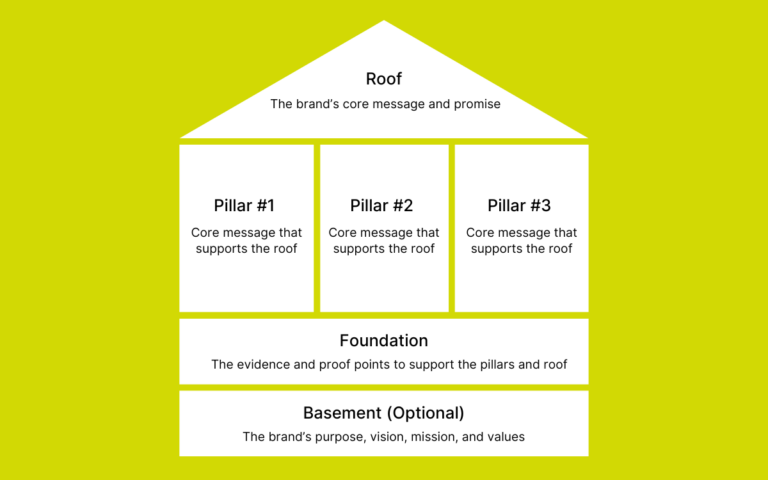Creating a compelling brand is about more than just defining its essence, unique positioning, and distinct identity. It also involves showcasing it effectively to the world – a process where brand exposure plays a pivotal role.
Before leaping into the development of a brand communication strategy, it’s worth taking a pause. Reflect on a few vital questions: What are our objectives with this exposure? Who is our ideal audience? What emotions do we aim to stir when individuals engage with our brand? What makes our brand stand out, and how can we emphasize this in our messaging?
By addressing these questions, you can ensure that every interaction your brand has with its audience is impactful. Equally crucial is to pinpoint the most suitable communication channels that can rapidly and efficiently elevate your brand’s visibility.
Intrigued? Keep reading. This article is a concise yet comprehensive guide to mastering the art of genuine and impactful brand exposure.
Proven Systems for Business Owners, Marketers, and Agencies
→ Our mini-course helps you audit and refine an existing brand in 15 days, just 15 minutes a day.
→ The Ultimate Brand Building System is your step-by-step blueprint to building and scaling powerful brands from scratch.
Table of Contents
Definition of brand exposure
Brand exposure can be defined as any moment or opportunity where the brand can reach an audience and be noticed by people. It is a key component of branding that mainly aims to increase brand awareness.
Brand exposure can be achieved through different channels. Some examples include:
- Traditional advertising (TV, radio, print, outdoor)
- Digital marketing (Search Engine Marketing (SEM), Pay-per-Click ads (PPC), Search Engine Optimization (SEO), social media, email campaigns, affiliate marketing, mobile ads)
- Content marketing (articles, podcasts, videos, webinars, infographics, research papers)
- Public relations (press release, social media influencer marketing, public speaking, product placement)
- Events and sponsorship (tradeshows, conferences, hosting events, sponsoring events, guerilla marketing)
- Community engagement (participating in forums, engaging in social media comments, encouraging user-generated content, responding to online reviews)
- Point of sale advertising (product samples, flyers, displays)
Brand exposure vs. brand awareness
While brand exposure and awareness are closely related concepts, they have distinct differences.
Brand awareness refers to the level of familiarity and recognition that people have with a brand. It focuses on whether people know a particular brand exists and can identify it when being exposed to it.
On the other hand, brand exposure is about the deliberate effort to make the brand visible and increase its reach. It involves actively creating opportunities for the brand to be seen by potential customers and other audiences, increasing the likelihood that they will become aware of it. One of the goals of brand exposure is to build brand awareness.
The 6 golden principles of brand exposure
Now that we have a clear understanding of brand exposure let’s dive into six golden rules that can help you create more meaningful interactions.
Principle 1: Understand your target audience
Understanding your target audience before promoting your brand to them is essential. This can be done through market research, surveys, focus groups, or social media monitoring. Knowing your audience’s demographics, interests, and pain points can help you tailor your messaging and branding to resonate with them.
Your audience can vary depending on the type of exposure. While your target consumers are likely the primary audience, other groups such as potential employees, investors, partners, or the local community may also be relevant.
For instance, if you’re launching a new product, potential customers may be the primary audience, but investors and industry partners may also be interested in learning more. In contrast, the local community may be the primary audience if you’re participating in a local charity event.
Understanding the diverse groups that make up your audience can help you tailor your messaging and branding efforts to reach and engage with each segment effectively.
Principle 2: Define your exposure intention
Before embarking on any specific brand exposure, it is essential to define your intention.
Ask yourself: What is your main objective with this moment of exposure? Is it to increase sales, build brand loyalty, or establish your brand as a thought leader in the industry? By clarifying your objectives, you can tailor your brand exposure efforts to align with these goals.
To ensure that your brand exposure is effective and memorable, consider these additional questions:
- What emotions do you want to evoke through this interaction? People often remember how they felt during an event more than specific information. Thinking about how you want people to feel when coming across your brand will help you stay focused and build more meaningful and human interactions.
- What do you want people to remember from your brand after this exposure? Think about the key idea you want people to take away from this experience. It can be a feeling, as mentioned above, a practical piece of information, a key benefit, or a beautiful memory.
By answering these questions, you can create a clear and compelling intention for your brand exposure to help you stay focused and effectively achieve your goals.
Principle 3: Expand your reach through relevant communication channels
Not all communication channels are equally effective for every brand. It is crucial to identify the channels that resonate best with your target audience and align with your brand values. Whether it’s social media, content marketing, influencer partnerships, or traditional advertising, choose the channels that allow you to reach your audience most effectively.
Digital marketing has become increasingly popular in recent years, and for good reason. It offers many benefits for businesses, including cost-effectiveness, new communication channels, and targeted advertising. One interesting exposure tool is influencer marketing, which involves partnering with social media influencers to promote a brand or product.
Influencer marketing is particularly effective for brand exposure because it allows businesses to reach a targeted audience through someone they trust and admire. Influencers have built up a loyal following on social media, and their followers trust their opinions and recommendations. By partnering with an influencer, businesses can tap into this trust and reach a wider audience than they would be able to on their own.
Principle 4: Consistently infuse your brand identity into every exposure
A successful branding strategy relies on a clear and defined brand identity. This includes elements such as your brand’s story, values, personality, communication style, and visual elements. Your brand identity is what sets you apart and makes you authentic. This identity must be reflected in every interaction.
By ensuring that each exposure across all channels reflects your brand’s identity, you are implementing your branding strategy. This consistency helps maintain the authenticity of your brand and allows you to control how the public perceives and interacts with your brand.
Consistency in showcasing your brand identity is the glue that holds your brand together. It guarantees your audience a consistent and cohesive experience, regardless of where or how they interact with your brand. This consistency contributes to building brand recognition and fostering trust among your audience.
Principle 5: Be different
In a competitive market, it’s crucial to differentiate your brand and capture the attention of your target audience. Remember your brand positioning and find creative and innovative ways to showcase your unique value proposition.
Here are some examples:
- A brand emphasizing community can create distinctive spaces and experiences that foster connections and make people feel heard. This could include hosting events, workshops, or meetups that unite like-minded individuals and encourage networking and collaboration.
- A fashion brand can stand out by hosting exclusive runway shows in unconventional venues, such as art galleries or historical landmarks. This will not only create a memorable and immersive fashion experience but also showcase the brand’s unique style and creative vision.
- A tech brand can use augmented reality or virtual reality technologies to create interactive and immersive product demonstrations. This will allow customers to experience the product’s features in a captivating and innovative way, giving them a better understanding of its benefits and how it can solve their problems.
- A brand that prioritizes joy and happiness can use upbeat music, bright colors, and smiling ambassadors to enhance the overall brand experience and evoke positive emotions. This will make the brand more memorable and appealing to customers, as they associate it with positive feelings.
By capitalizing on your brand’s strengths during each brand exposure, you can get your brand noticed and build new experiences unique to your brand. This will help you stand out in a crowded marketplace and build a loyal customer base.
Principle 6: Pay attention to detail
In brand exposure, the little details can make a big difference. Paying attention to the finer elements of your interactions can leave a lasting impression on your audience.
Consider the following examples:
- Visual consistency: Ensure your brand’s visual elements, such as colors, fonts, and logos, are consistent across all platforms and materials. This visual coherence helps reinforce brand recognition and establishes a sense of professionalism.
- Quality control: Double-check for typos, grammatical errors, or design flaws. Attention to detail and quality assurance convey professionalism and reliability.
- Personalization: Tailor your interactions to make them feel personalized and relevant to your audience. Addressing customers by their names or providing customized recommendations shows that you value their individual needs and preferences.
- Thoughtful attentions and surprises: Include a personalized note or small gift with each purchase to show appreciation and create a memorable unboxing experience.
- Follow-up: After each interaction or exposure, follow up with your audience, whether through personalized emails, thank-you notes, or social media engagement. This extra step demonstrates your commitment to building relationships and leaves a positive and lasting impression.
Paying attention to such details can elevate your brand’s image and create a more memorable and meaningful brand experience for your audience.
Conclusion
In today’s noisy marketplace, meaningful brand exposure is more important than ever. By following these six golden principles – understanding your audience, defining your intentions, using relevant channels, staying consistent with your brand identity, differentiating from competitors, and minding the details – you can cut through the clutter and create impactful, memorable interactions that genuinely resonate with your audience.
The key is always keeping your target audience and brand objectives at the forefront. Tailor your messaging, aesthetics, and experiences specifically to them. Be creative in how you showcase your brand’s uniqueness across channels. And remember that consistency, authenticity, and thoughtfulness in every touchpoint lead to solid brand connections over time.










